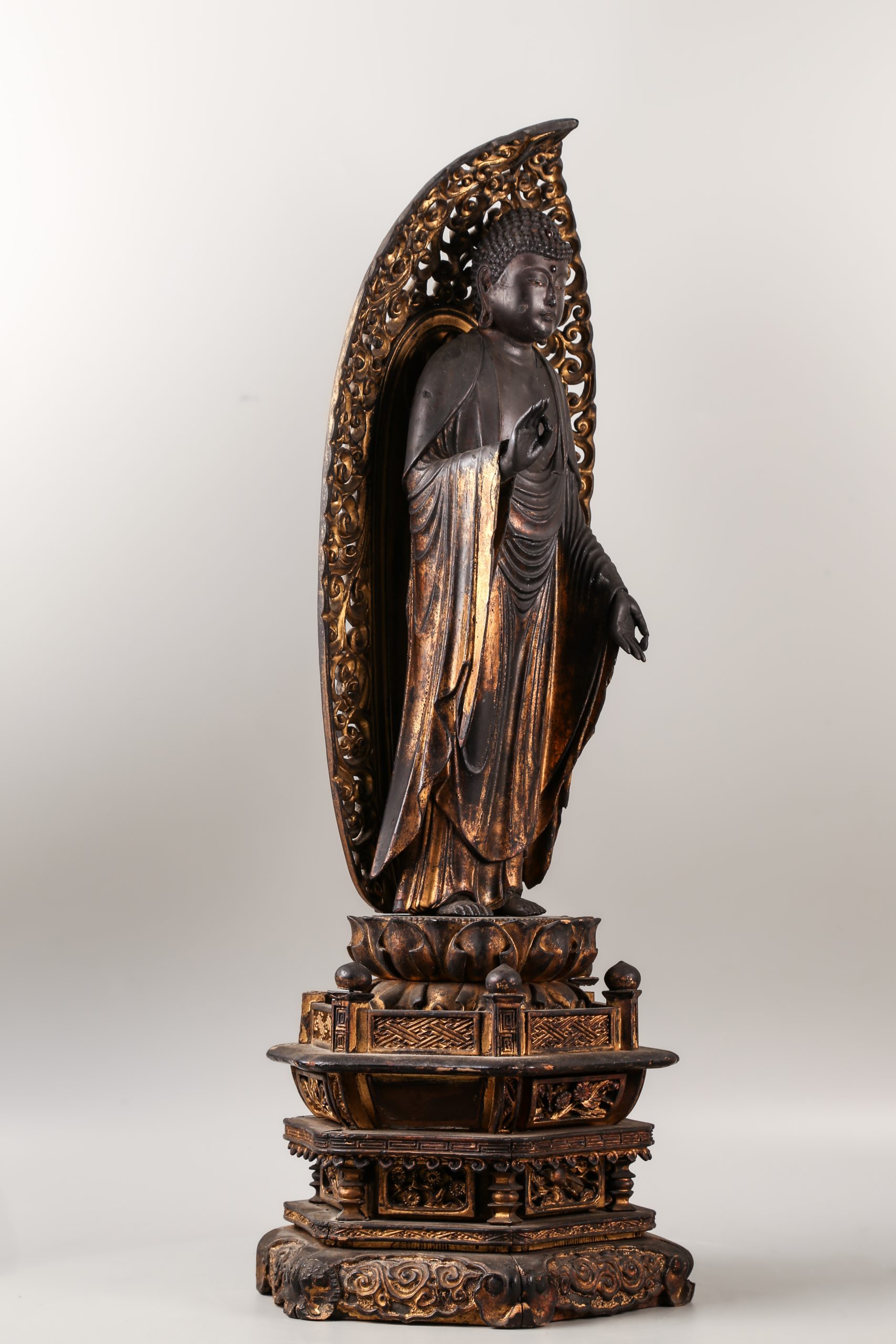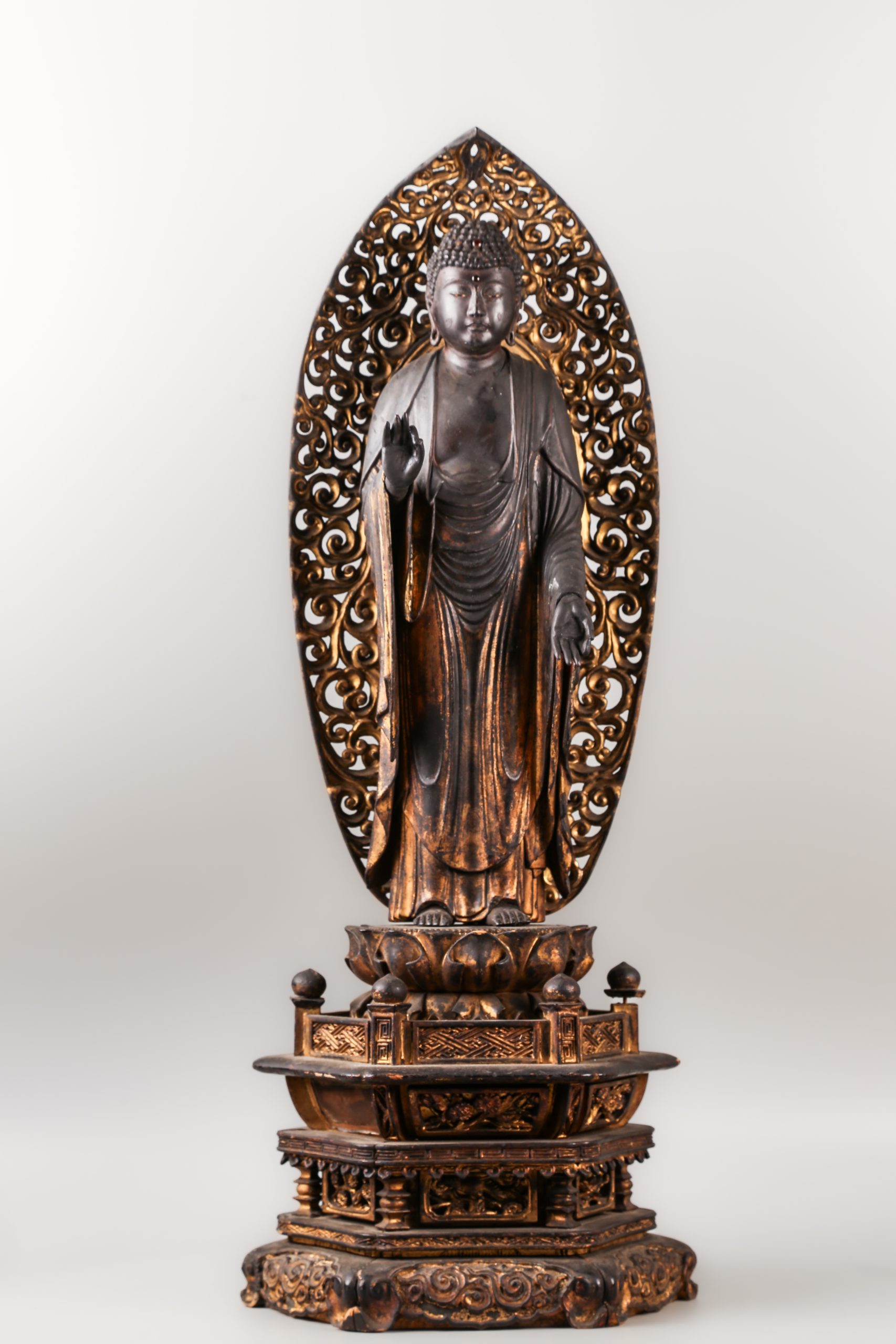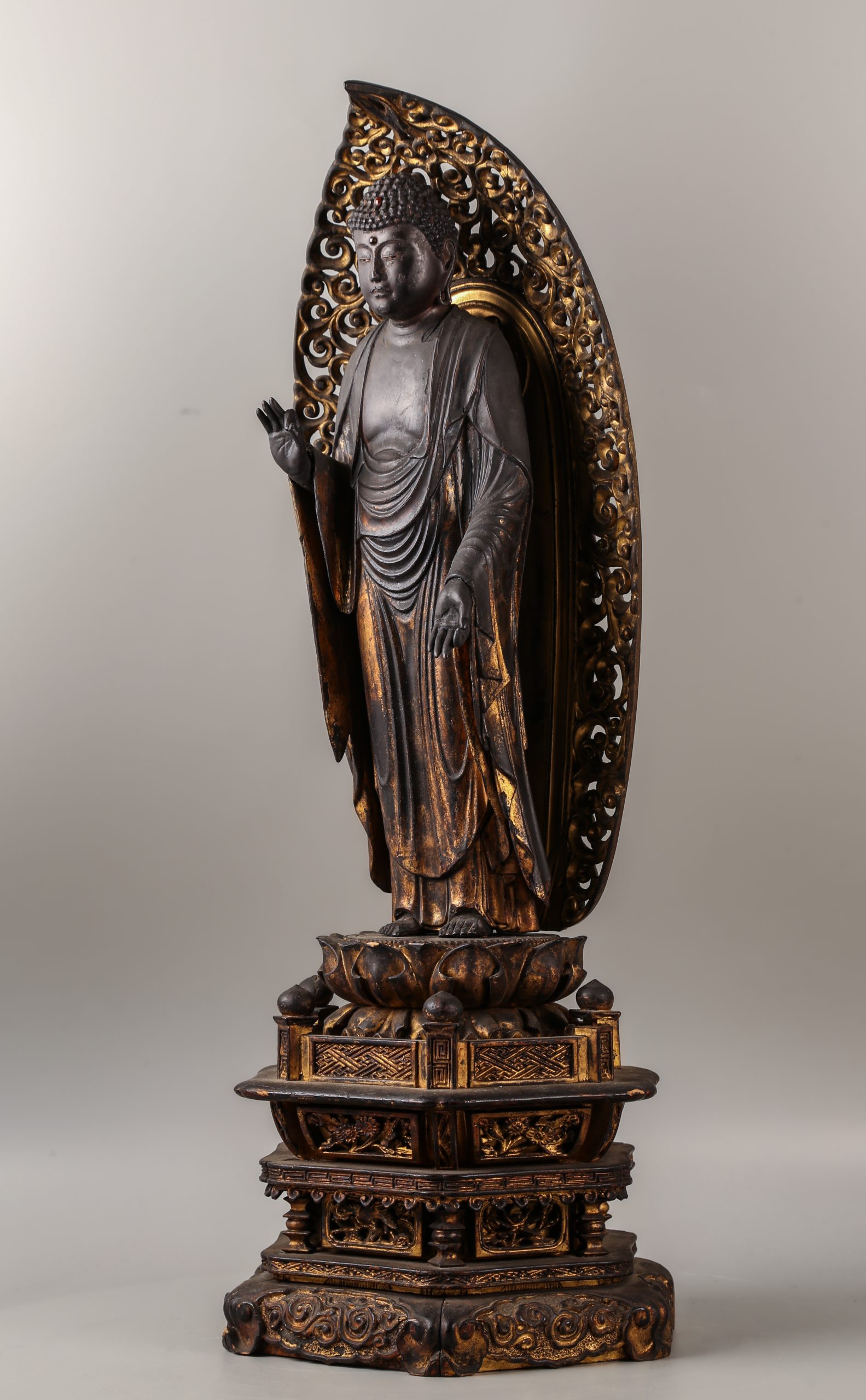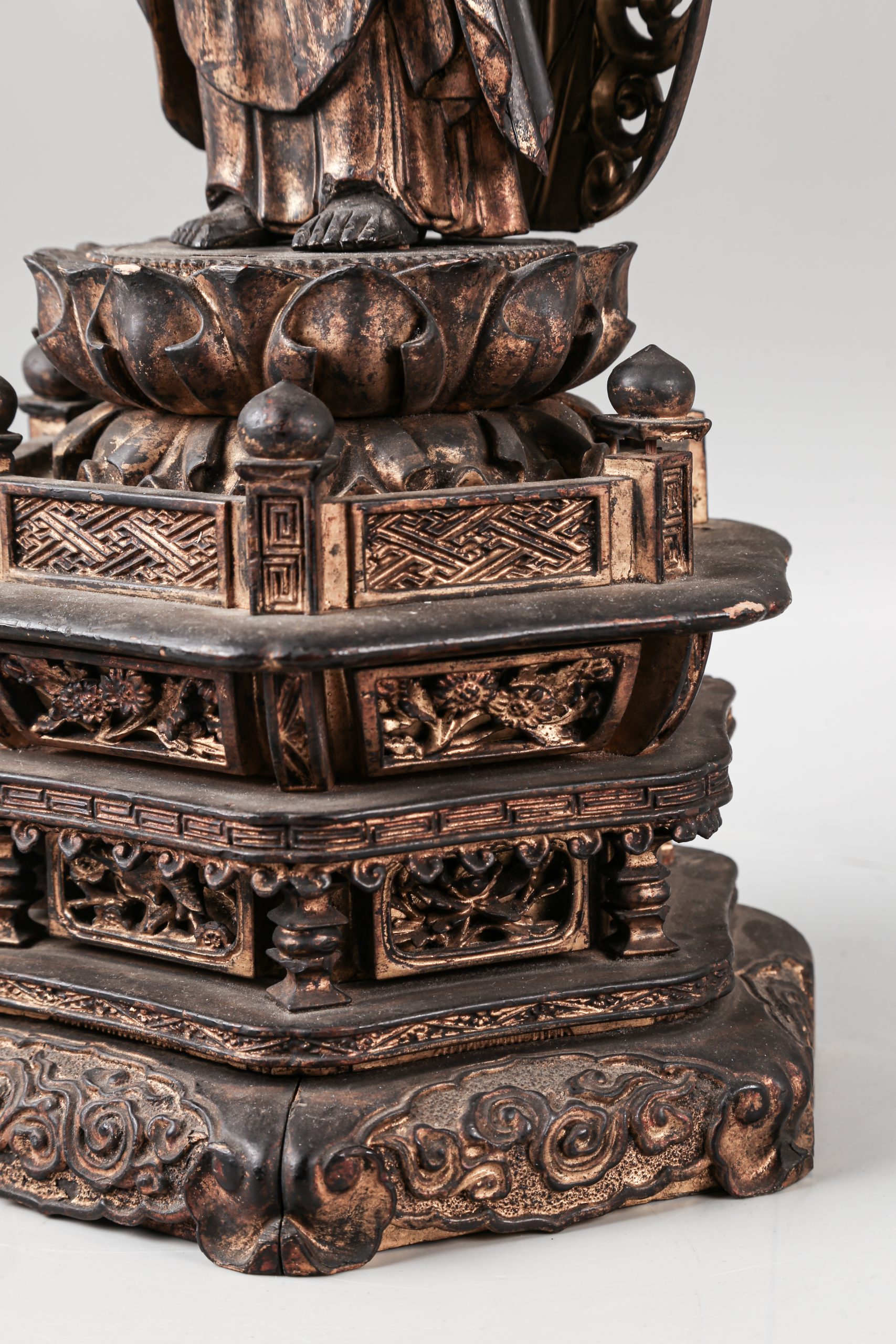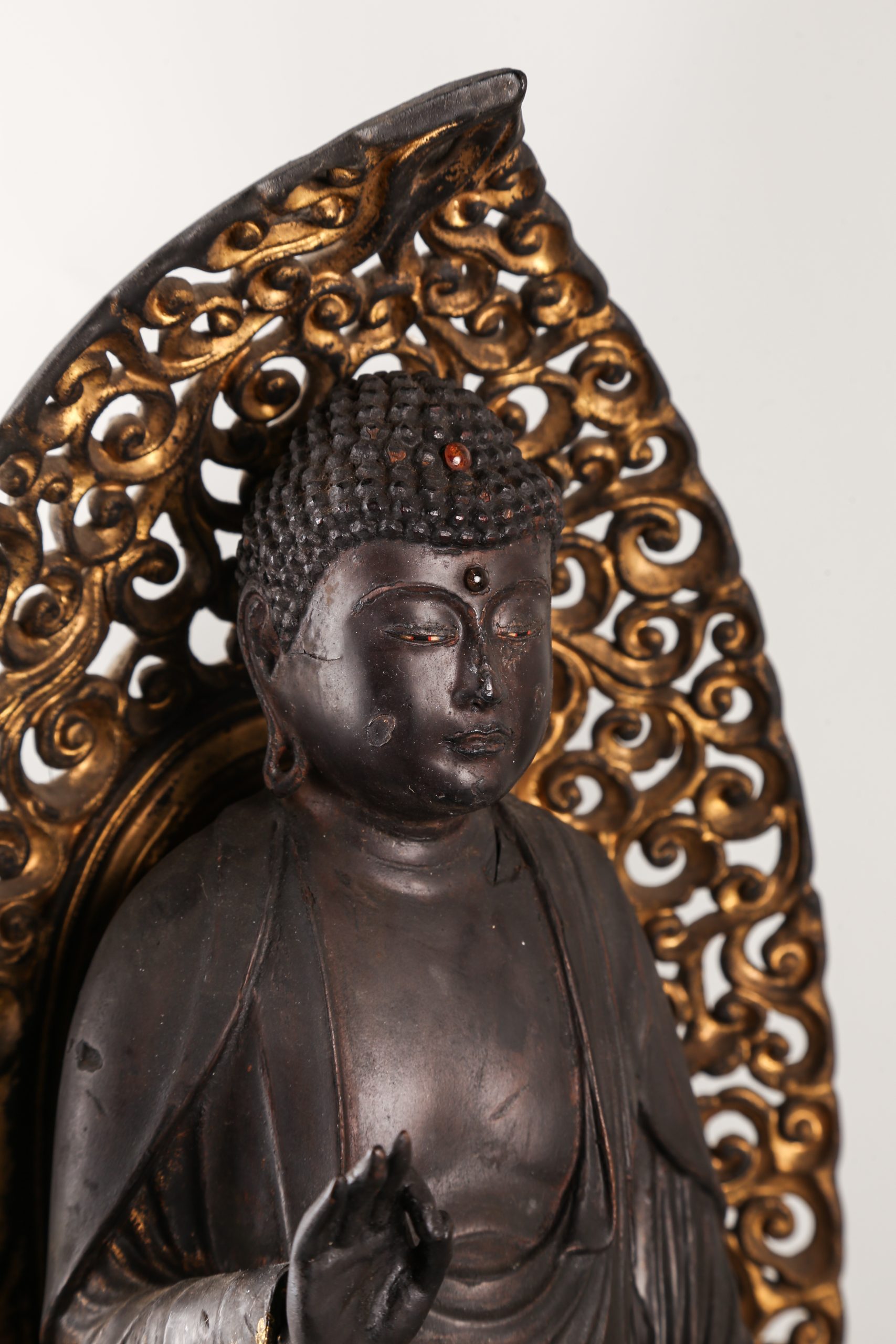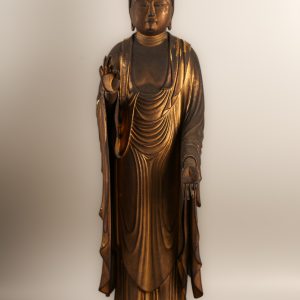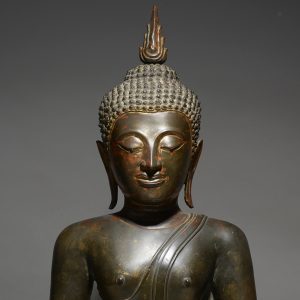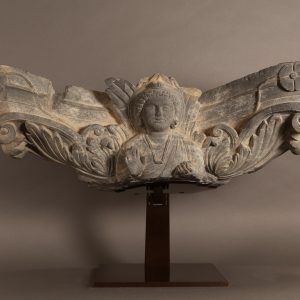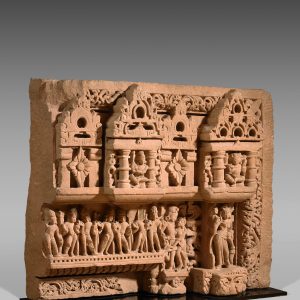Amida Nyorai
20 000,00€
Gilded lacquered wood
Japan
Muromachi period (1336-1573)
H. 58 cm
Description
Amida, the Japanese name for the Western Buddha Amitābha, is worshipped fervently in the Far East. His devotees hope to be reborn for a final reincarnation in his Pure Land of Sukhāvati, where all can attain liberation from the causal cycle. The pious deity, coming from the western mountains, accompanied by two spiritual beings promised to Enlightenment (bosatsu-bu, bodhisattva), Kannon (Avalokiteśvara) and Seishi (Mahāsthāmaprāpta) appears to the dying during his last breath. Amida, alone or with his assistants, thus appears in a number of small wooden reliquaries, objects of private devotion. Here Amida is standing, dressed like an Indian monk, and using both his raised right hand and his lowered left hand to make the gesture of ‘argumentation’ (vitarkamudrā). This representation should be compared with the usual gestures of Buddhas in the Far East, that of absence of fear (abhayamudrā) and that of giving (varadamudrā).
The massive destruction caused by the numerous civil conflicts during the Muromachi (1335-1573) and Momoyama (1573-1603) periods did not encourage patrons to repair and complete the sculpted ensembles in an innovative style, but rather to perpetuate the refined art of the late Heian period (794-1185), during the rule of the Fujiwara prime ministers. This aesthetic, which had become “classical”, would serve as a cyclical reference for practitioners over the next seven centuries.
Sculptors retained the extreme elongation of the body, the fluidity of the drapery, and the circular faces with their restrained expressions but youthful, benevolent features. Here, the Buddha is set in an openwork mandorla, standing on a base adorned with lotuses and finely sculpted details. His eyes, known as gyokugan, are encrusted with crystals. The crystals adorning the urna and usnisa are also present. The sculpture is extremely refined and in a superb state of preservation.
Provenance : Private collection.

